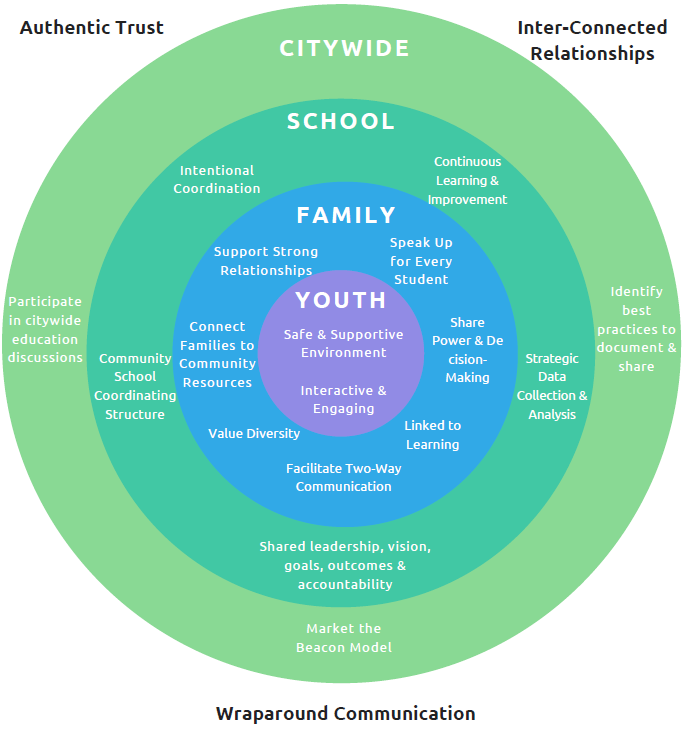Program Model
The Beacon Program Model guides the programming that is offered at Beacon Centers by articulating four key areas of influence and their related goals. These activities not only supplement the school day but nurture the skills necessary to be successful in life and school. They close the gap between schools and community needs and broker strong partnerships through which more resources are available and services are better coordinated to achieve positive outcomes for our youth, families and communities. It is one of the first models of communities and schools working in partnership.
The Beacon model rests on the assumption that by transforming public schools into safe spaces where children, youth, parents and community members can engage in positive, educational, enriching and healthy activities during extended hours, youth in the community will benefit. This assumption is reinforced by the well-established social ecological model of child development, which posits that there are multiple spheres of influence, often depicted as concentric circles. These spheres emanate out from micro-level influences like family, to larger, more structural or macro-influences like school, neighborhood, and cultural or economic context (Bronfenbrenner, 1977; Bronfenbrenner, 1979; Santrock, 2007; Kail & Cavanaugh, 2010).
The job of the Beacons, is therefore, seen as not only providing youth development and academic learning supports to youth, but also supporting parents in skill development, helping families navigate schools, coordinating school-day and out-of-school-time efforts, deepening participating youths’ connection to their communities, and ensuring the neighborhood is a healthy place in which to grow up. At Beacons, these concentric circles of influence encompass youth, families, schools, and citywide systems.
To download the full program model, please click here: SFBI Program Model



